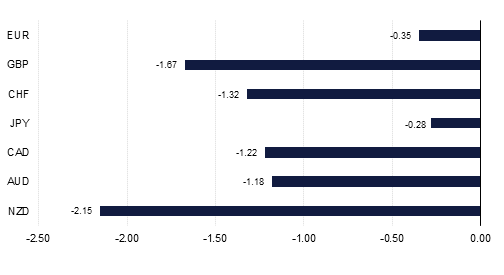
There were potentially two positive developments over the weekend that should be constructive for risk appetite at the start of the week including for equities, bond yields and the dollar. The first of these was the news that North Korea is to suspend nuclear and ICBM tests and dismantle its nuclear sites according to North Korea's Korean Central News Agency. The suspension went into effect on Saturday with North Korea’s Kim Jung Un seemingly wanting to shift his country’s focus towards improving the economy and away from nuclear powered security. The announcement comes against the background of pending talks between the US and North Korea and portend a positive outcome that could help to diffuse one of the most intractable geopolitical problems of recent years, if not decades.
The second development was the announcement that US Treasury Secretary Steve Mnuchin is considering a trip to China in a bid to avert a pending trade war between the two countries that could in extremis cause the world economy to sink back into recession. Both announcements are still a long way from achieving lasting solutions to two of the world’s biggest uncertainties, but on both counts there should be at least a reduction in risk aversion in the short term as a result. These steps also come against a background of markets already stepping away from contemplating the possibility of a US recession last week, as 10-year Treasury bond yields rose to just shy of 3.0%. This caused the yield curve to steepen as the perceived risk of the US economy falling back into recession lessened. Indeed, the 2s-10s spread had briefly hit 43 bps, not seen since 2007 and the financial crisis, causing global equity markets to become nervous.
Previously firmer bond yields had been associated with weaker equity markets, and a softer dollar, but in this instance the context is different with geopolitical and trade tensions now seemingly less of a concern. The dollar should therefore be able to continue its recent improvement at least until fresh doubts about trade and geopolitics resurface, which is entirely possible. The dollar also faces a heavy week in terms of corporate earnings figures, heavy Treasury supply, and important data releases, with the main focus likely to be on whether the 10-year yield can test and break above 3.0%. If this can happen it may be that the dollar can also begin to re-establish its former positive relationship with rising interest rates.
